July 2, 2018 was our second day in Prince Edward Island.
Our first day was picture perfect, we were already in love with PEI and looked forward to a coastal drive on the north-west side of the Island. After a satisfying fishcake breakfast, Melissa and I headed out to the province’s northernmost location at the North Point Light Station. The morning air was a bit chilly and a misty fog rolled in during the evening. I did not mind the weather, it made for an interesting ambiance and nicely diffused lighting for photos. Along the way, we made a brief stop at Seacow Pond Harbour and took the obligatory tourist photo with one of those wooden fisherman guys.


After a short drive, we arrived at the North Point Lightstation. Construction on this historic landmark commenced in 1865, which predates Canadian Confederation by two years. Prior to its construction, the long rocky reef extending off North Cape was a hazard to shipping. The colonial government of PEI constructed the lighthouse from 1865-1866, at a cost of just over $5000. By 1867, when our nation was unified, it was fully operational. The North Cape Lightstation was automated in 1967, and the following year two sheds built in 1950 were sold off as surplus. The facility remains in continous operation to this day.
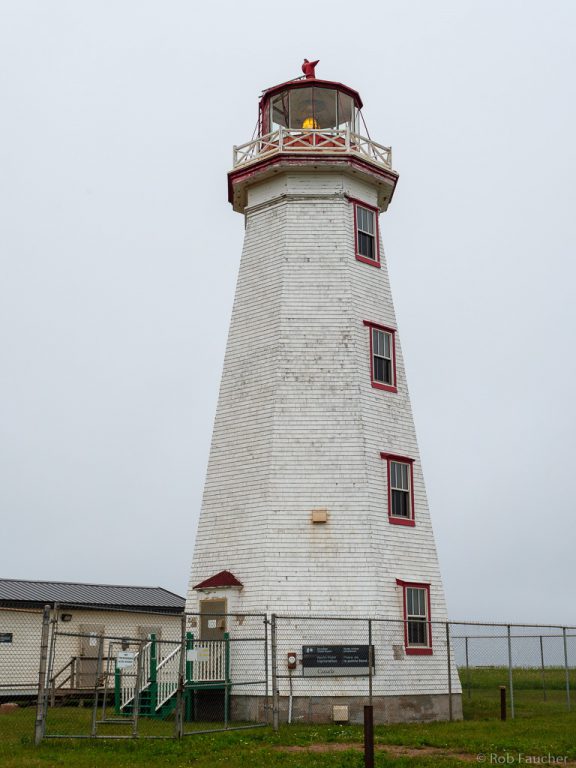
Although the lighthouse is closed to visitors, it is a popular tourist attraction and an important milestone in the island’s history. Melissa spent some time in the gift shop and I took a stroll along the shoreline. In true Canadian form, someone constructed some inukshuks on the beach.
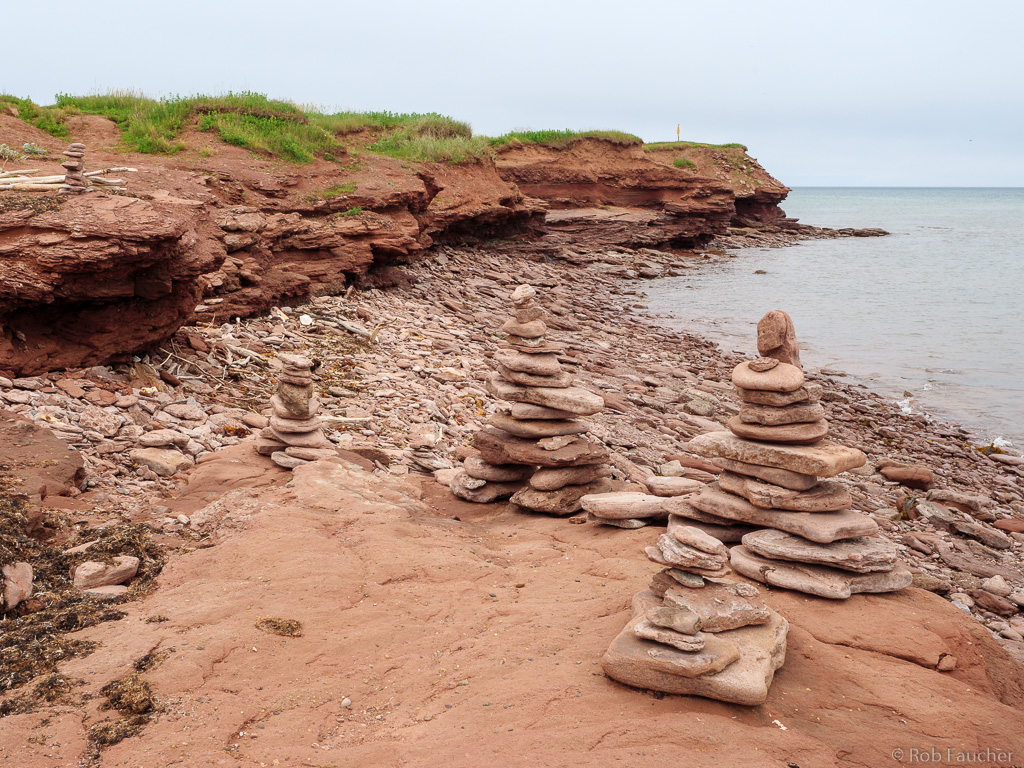
The ocean air was chilly, but still quite comfortable. After a leisurely walk on the shorelines, it was time to get moving again. The day ahead was considerably warmer and by late morning, all the fog burned off. We headed south towards Malpeque Bay, which is famous for the oysters which bear its name. The drive from North Point to Malpeque Bay is an hour an half as the crow flies, however our journey took a few hours as stopping along the way is what we had in mind. We meandered off the main road and visited Malpeque Harbour, a small marina devoted to commercial fishing. From this remote location, it was easy to look out onto the bay itself.

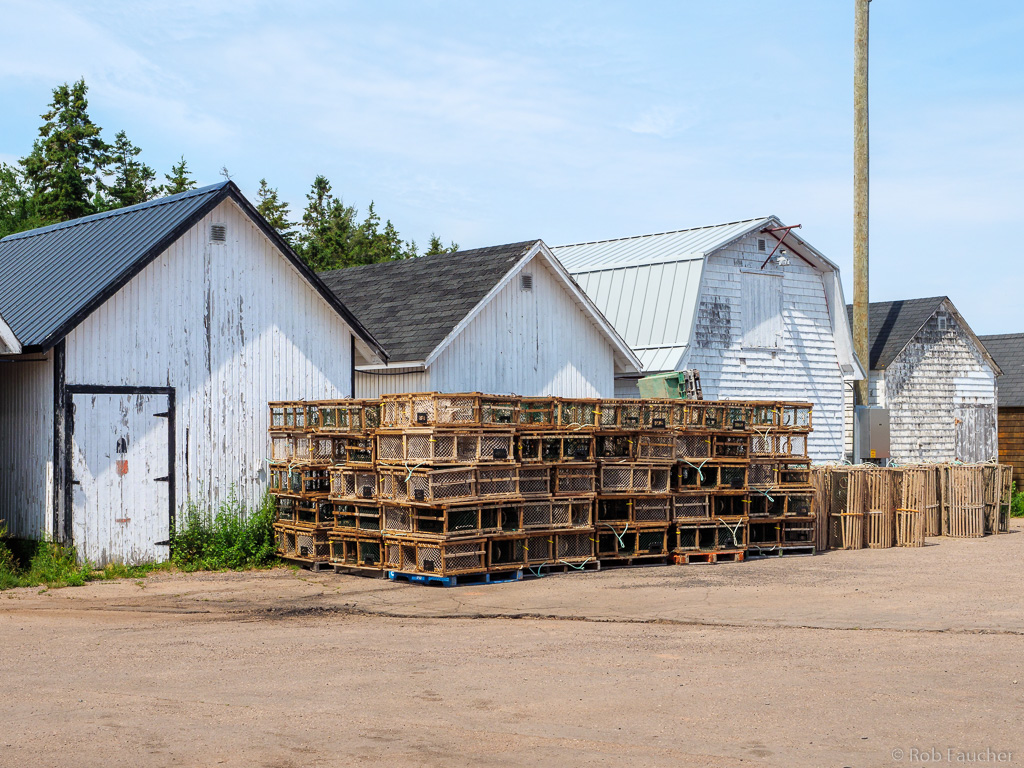
As we continued along the coastal highway we passed a number of picturesque views of Malpeque Bay with its countless oyster and mussel farms. There were far too many temptations to stop and we had to be mindful of our time. Then we happened upon a real gem: St. Mary’s Roman Catholic Church in Indian River. Designed by Island architect, William Critchlow Harris, the building is prized as a fine example of French Gothic architectural style. Construction of the church began in 1900 and it was completed in 1902 at a cost of $20,000. In 2009, the Catholic diocese decommissioned the church, it was purchased by the Indian River Festival who renovated the building and restored many of its architectural features. It now serves as an event venue and tourist destination.
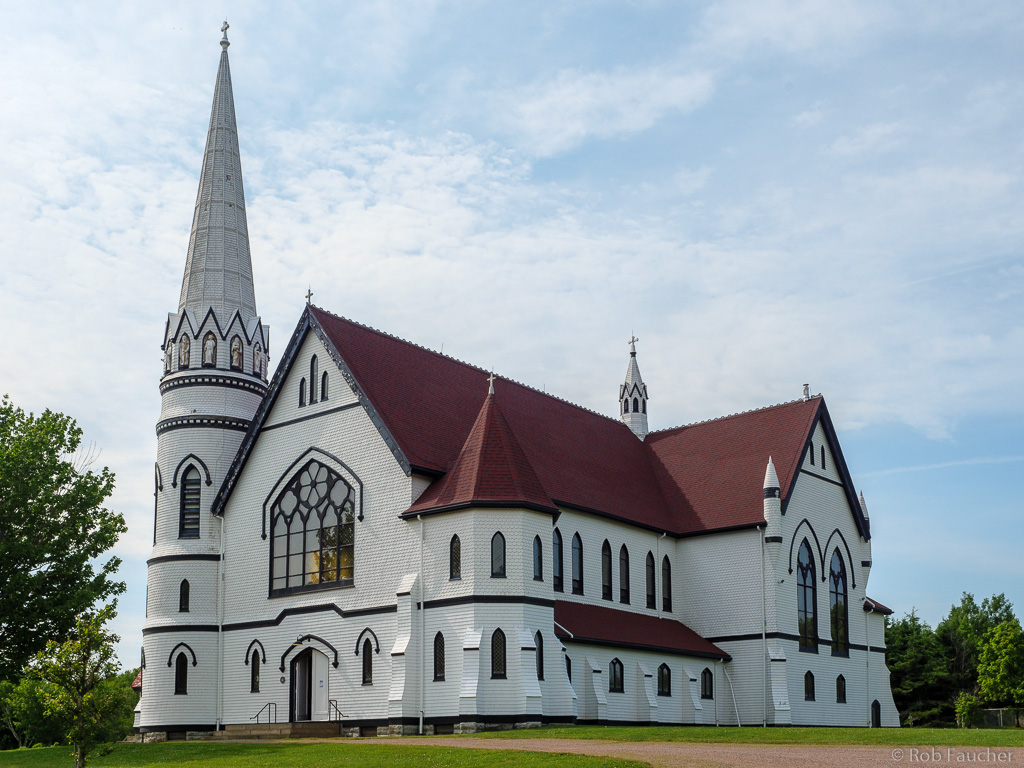
No matter where you go in PEI, the ocean is never far away and then there is the famous red soil — it follows you at every twist and turn. The red coloured terrain makes for beautiful landscapes and it is ideal for growing potatoes and supporting livestock. If you were born in Canada, chances are you were raised on PEI potatoes and listened to Stompin’ Tom Connors sing Bud The Spud. If you call yourself Canadian and have done neither, shame on you.

PEI is also known for rugged red shorelines, sandy beaches, sprawling sand dunes and sandstone formations. One of better known formations is the Tea Pot in Thunder Cove Beach – an unsupervised location off the beaten path somewhere near Darnley, PEI. It is not easy to find, but it is worth the effort. There one finds beaches of fine sand buttressed by caves and rock formations carved out of the sandstone cliffs by ocean and wind. The sandstone is soft and crumbles easily to the touch, so I imagine that the shapes of the coves and rock formations must change quickly in geological time. How different will the place look in 50 years?
The shallow waters extend well beyond the beach and are surprisingly warm during the summer. It is a very different world here from the rest of PEI and favourite spot for tourists.

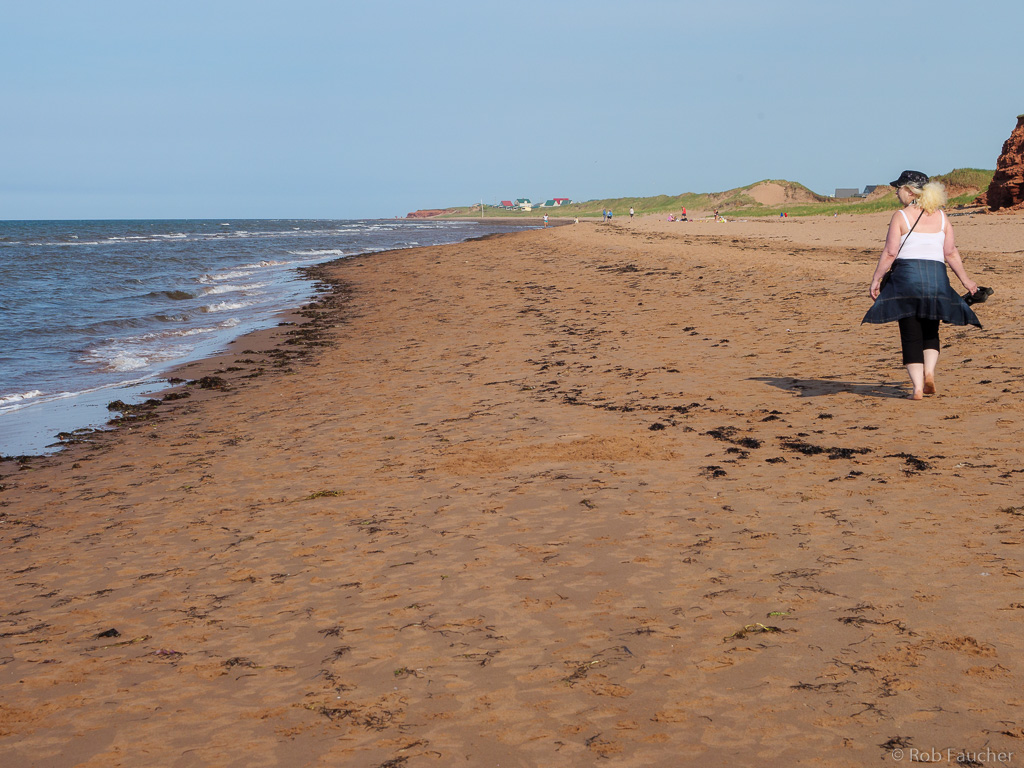
The sun was starting to set, so we left Thunder Cove and continued the drive east. We stopped for dinner in Cavendish, a small town bristling with tourists, beach shops and restaurants. After a satisfying surf and turf dinner, I started searching for a motel or hotel further out east, but had no luck finding anything vacant. Unfortunately, this meant we would lose some time the following day as we could progress no further.
During summer months, finding accomodations on the island can be challenging, so you take what you can get. Eventually, we found vacancy at a budget motel in Cavendish. We unpacked our stuff, I drove out the the liquor store, got some whisky and smoked a cigar as the sun faded below the horizon.
I wanted to do some evening photography near the ocean. What I had in mind was a starry sky and the milky way set against the water. I waited until 10:30 PM for a dark sky and drove out to the water. Unfortunately the beach area was on a private campground and the ocean view faced west, which meant there was residual sky glow from the sun. The east facing sky was darker and there was a graveyard across the street from the motel. So, I decided to make the best of it and grabbed my camera, a wide angle lens and a tripod. I set the camera low on the ground and made some long exposure shots. The sky was dark enough to pick up few stars and the street lights cast an eerie glow on the tombstones. Around 11:30, I returned to the motel, lit another cigar, sipped some whisky and called it a day.










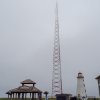
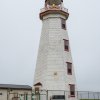
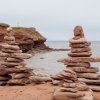
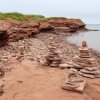

















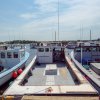



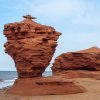

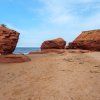
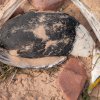















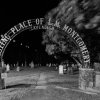

Love the intriguing rock formations of Thunder Cove Beach! Wow!